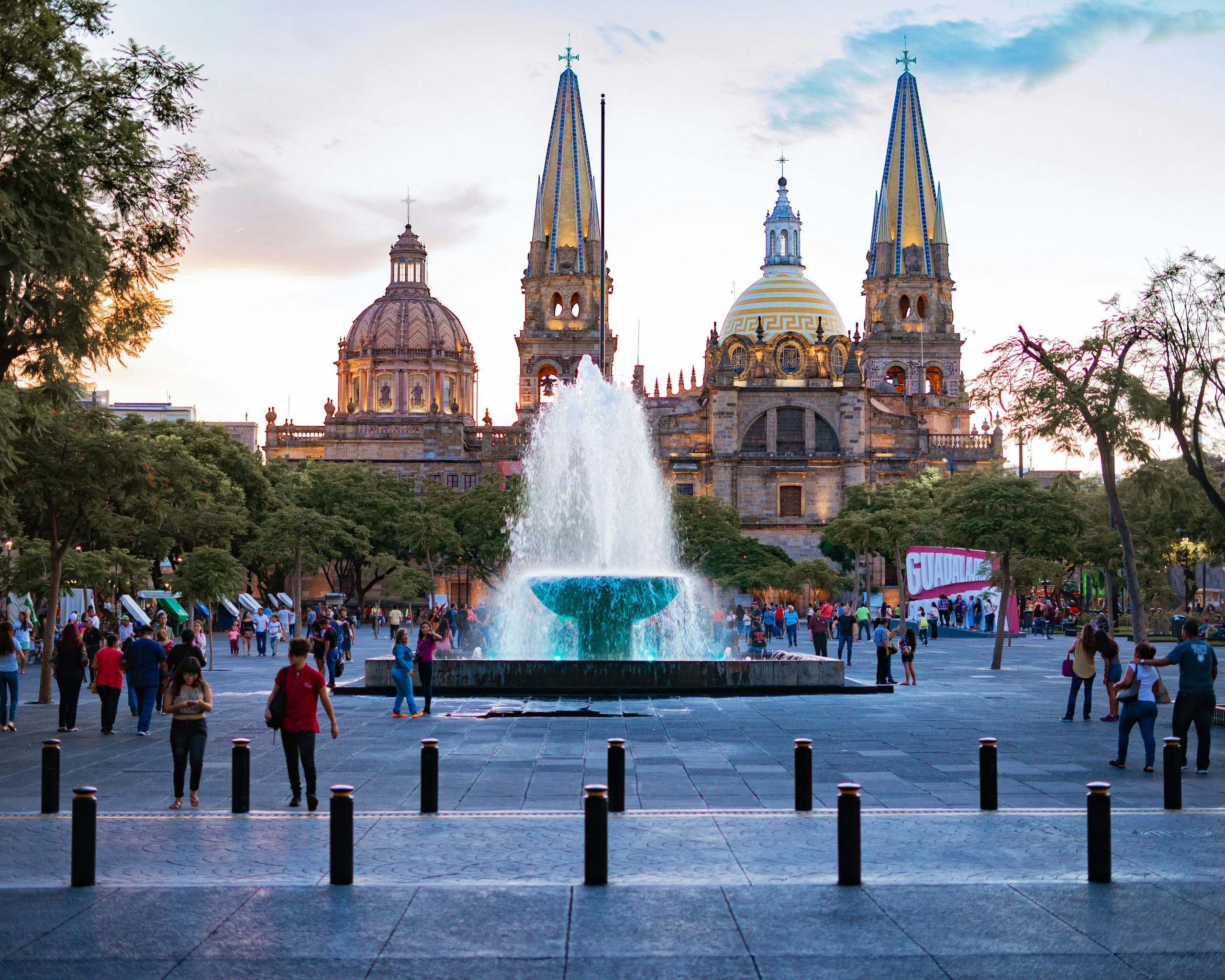✈️ Introduction
Mexico has become one of the most popular destinations in the world for digital nomads. With its vibrant culture, delicious cuisine, stunning coastlines, and affordable cost of living, it’s no wonder thousands of remote workers choose Mexico every year as their temporary or long-term base.
While Mexico does not have a visa officially called a “Digital Nomad Visa,” its Temporary Resident Visa works perfectly for nomads. This visa allows foreigners who can demonstrate sufficient income or savings to live in Mexico legally for 1 year, with the possibility of extending up to 4 years.
This makes Mexico one of the best digital nomad visa options globally — flexible, affordable, and with a clear pathway to permanent residency.
In this guide, you’ll learn everything you need to know about the Mexico Digital Nomad Visa in 2025:
- Who qualifies & eligibility criteria
- Income requirements & financial proof
- Step-by-step application process
- Documents, fees, and timelines
- Benefits & lifestyle perks for nomads in Mexico
- Cost of living & best cities for digital nomads
- Family inclusion rules
- Tax obligations & insurance requirements
- Renewal and long-term residency options
- Frequently asked questions (FAQs)
By the end of this blog, you’ll have a full roadmap for turning Mexico into your next digital nomad base.
👤 Who Qualifies for Mexico’s Digital Nomad Visa
Mexico’s digital nomad pathway is officially known as the Temporary Resident Visa (Residente Temporal). It’s designed for foreigners who want to stay longer than a tourist visa (180 days) and who can prove financial self-sufficiency.
You may qualify if you:
- Work remotely for clients or companies outside Mexico.
- Are self-employed, a freelancer, or an entrepreneur with stable income.
- Can prove a monthly income or savings above the required threshold.
- Have a valid passport with at least 6 months’ validity.
- Can show proof of accommodation or a plan to live in Mexico.
You are unlikely to qualify if you:
- Intend to work for a Mexican company without a work permit.
- Cannot prove consistent income or sufficient savings.
- Have a criminal record.
📋 Eligibility Criteria & Income Requirements (2025)
The financial thresholds are one of the most important parts of the application. While exact numbers vary slightly by consulate, the general requirements for 2025 are:
Option 1 – Monthly Income Proof
- Show an average monthly income of $2,600–$3,000 USD over the last 6 months.
- Income must come from outside Mexico (employment, freelance, business, etc.).
Option 2 – Savings/Investment Proof
- Show an average bank balance or investments of at least $43,000–$50,000 USD over the last 12 months.
Dependents (Spouse & Children)
- If applying with family, the required income/savings amount increases by around 25% per dependent.
✅ Quick Eligibility Checklist
- Do you earn at least $2,600/month or have $43,000+ in savings?
- Can you prove this with bank statements or payslips?
- Do you work remotely for clients/employers outside Mexico?
- Do you have valid health insurance?
- Do you have a valid passport and clean record?
👉 If yes, you’re a strong candidate for Mexico’s Digital Nomad Visa.
Application Process, Documents, Fees & Timelines
🛠️ Step-by-Step Application Process
Applying for Mexico’s Digital Nomad Visa (Temporary Resident Visa) involves two main stages: at a Mexican consulate abroad and then inside Mexico. Here’s how it works in 2025:
1. Confirm Eligibility
- Ensure you meet the income/savings threshold.
- Gather financial documents (bank statements, payslips, investment records).
- Get valid health insurance that covers you in Mexico.
2. Book an Appointment at a Mexican Consulate
- Applications must begin at a Mexican embassy or consulate abroad (not inside Mexico).
- Appointments are usually booked online through the consulate’s website.
- Choose the consulate carefully: some are stricter or have slightly different income thresholds.
3. Submit Your Application Abroad
At the consulate, you will:
- Fill out the Temporary Resident Visa application form.
- Submit required documents.
- Provide biometric photos and fingerprints.
- Attend a short interview about your work, lifestyle, and reason for moving to Mexico.
4. Pay Consular Visa Fee
- Pay approximately $40–$50 USD for the visa application.
- Fees may vary by consulate and local currency exchange.
5. Receive Temporary Resident Visa Sticker
- If approved, you’ll receive a visa sticker in your passport.
- This allows you to enter Mexico within 180 days to finalize your residency.
6. Enter Mexico & Register with Immigration (INM)
- Once in Mexico, you have 30 days to visit the local Instituto Nacional de Migración (INM) office.
- Submit your documents again, provide biometrics, and pay additional residency card fees.
7. Receive Temporary Resident Card (Residencia Temporal)
- Your residence card is valid for 1 year initially.
- You can renew annually for up to 4 years total.
- After 4 years, you may apply for permanent residency.
📄 Required Documents Checklist (2025)
Here’s what you’ll typically need for the Mexico Digital Nomad Visa:
✅ Valid Passport – At least 6 months’ validity.
✅ Visa Application Form – Completed and signed.
✅ Recent Passport Photos – Biometric, per consulate specifications.
✅ Bank Statements – 6 months for income proof or 12 months for savings proof.
✅ Proof of Remote Work – Employment contract, freelance invoices, or client letters.
✅ Health Insurance Certificate – Valid in Mexico.
✅ Accommodation Proof – Lease, hotel booking, or host invitation letter (sometimes requested).
✅ Marriage/Birth Certificates – If applying with dependents (apostilled + translated).
✅ Consular Appointment Confirmation – Printout of appointment booking.
👉 Pro Tip: Always check the website of the specific consulate you’re applying at. Requirements vary slightly from city to city.
💶 Fees & Costs
- Consular Application Fee: $40–$50 USD.
- Residency Card Fee in Mexico: $150–$250 USD depending on state and length of card.
- Translations: $20–$50 per page (if needed).
- Apostilles/Legalizations: $20–$100 per document.
- Health Insurance: $50–$150/month.
Total Estimated Cost (Individual)
💰 Around $400–$700 USD upfront, excluding monthly living expenses.
⏱️ Processing Times
- Consulate appointment to approval: 1–2 weeks (sometimes same day).
- Entry to Mexico & INM process: 2–6 weeks depending on the local office.
- Total timeline: 1–2 months for most applicants.
📝 Quick Application Summary
- ✅ Book appointment at Mexican consulate abroad.
- ✅ Submit documents + financial proof.
- ✅ Pay fee and attend interview.
- ✅ Get visa sticker in passport.
- ✅ Enter Mexico within 180 days.
- ✅ Visit INM within 30 days of entry.
- ✅ Provide biometrics + pay residency card fee.
- ✅ Receive Temporary Resident Card (1-year validity, renewable up to 4 years).
Benefits, Cost of Living & Best Cities for Digital Nomads
🎉 Benefits of Mexico’s Digital Nomad Visa
Mexico’s Temporary Resident Visa (often called the Digital Nomad Visa) is one of the most flexible in the world. Here’s why nomads love it:
1. Long-Term Stay
- Valid for 1 year initially, renewable up to 4 years.
- After 4 years, you can apply for permanent residency.
2. Family-Friendly Program
- You can bring spouse and dependent children, provided you meet higher income requirements.
3. Tax Advantages
- If your income comes from outside Mexico, you may not be taxed locally.
- Tax rules vary depending on how much time you spend in Mexico and whether you establish tax residency.
4. Affordable & Flexible Lifestyle
- Lower cost of living than the U.S. or Canada.
- High quality of life with excellent food, culture, and diverse environments (beach, city, mountains).
5. No Strict Work Restrictions
- You’re allowed to run your freelance business or remote job.
- You just cannot take a job with a Mexican company without switching to a work visa.
6. Clear Path to Permanent Residency
- Unlike many digital nomad visas that end after 1–2 years, Mexico’s system lets you transition into permanent status if you want to stay longer.
💸 Cost of Living in Mexico (2025)
Mexico is famous for being affordable compared to Western countries. Costs vary widely between major cities and smaller towns, but here’s a breakdown:
🏠 Housing
- Mexico City: $700–$1,300/month for a 1-bedroom in central areas.
- Playa del Carmen: $600–$1,100/month near the beach.
- Tulum: $800–$1,500/month (more expensive due to tourism).
- Guadalajara: $500–$900/month.
- Oaxaca: $400–$800/month.
🍴 Food & Dining
- Groceries: $200–$350/month per person.
- Street food meals: $2–$5.
- Casual restaurants: $7–$12.
- Upscale dining: $20–$40 for two people.
🚇 Transportation
- Metro/bus: $0.30–$0.50 per ride (Mexico City metro is among the cheapest in the world).
- Taxis/Uber: $3–$10 short rides.
- Domestic flights: $40–$100 (budget airlines).
- Car rentals: $400–$700/month.
💻 Coworking Spaces
- Mexico City: $120–$250/month.
- Playa del Carmen: $100–$180/month.
- Tulum: $120–$200/month.
- Guadalajara: $80–$150/month.
- Oaxaca: $60–$120/month.
👉 Average Monthly Budget for a Digital Nomad:
- Frugal lifestyle: $1,000–$1,500/month.
- Comfortable lifestyle: $1,800–$2,500/month.
- Family lifestyle: $3,000–$4,500/month.
🏙️ Best Cities in Mexico for Digital Nomads
Mexico offers a variety of options depending on your lifestyle preferences:
1. Mexico City (CDMX) – Urban & Cultural Capital
- Best for: Professionals, creatives, culture lovers.
- Pros: Fast internet, huge expat community, coworking hubs, world-class restaurants.
- Cons: Traffic and air pollution.
2. Playa del Carmen – Beach & Expat Hub
- Best for: Beach lifestyle + community.
- Pros: Strong digital nomad community, coworking spaces, Caribbean beaches.
- Cons: More expensive than inland cities.
3. Tulum – Trendy but Expensive
- Best for: Yoga, wellness, eco-nomads.
- Pros: Stunning beaches, boutique coworking, healthy lifestyle scene.
- Cons: High rent, expensive compared to rest of Mexico.
4. Guadalajara – Tech & Startup Scene
- Best for: Entrepreneurs, tech nomads.
- Pros: Affordable housing, thriving startup ecosystem, cultural events.
- Cons: Smaller expat community than CDMX.
5. Oaxaca City – Cultural & Affordable
- Best for: Slow living, creatives, budget nomads.
- Pros: Affordable, rich cultural traditions, great food.
- Cons: Internet can be inconsistent in some areas.
6. Puerto Vallarta – Beach + City Balance
- Best for: Retirees, nomads who want balance.
- Pros: Safe, affordable, LGBTQ+ friendly, growing nomad hub.
- Cons: Humid climate, touristy in high season.
🌤️ Climate & Lifestyle
Mexico has diverse climates depending on the region:
- Coastal towns: Tropical, hot, humid.
- Mexico City & central regions: Mild, spring-like most of the year.
- Northern Mexico: Hot summers, cooler winters.
- Mountain towns (like San Cristóbal): Cooler year-round.
👉 No matter your preference—beach paradise, big city, or cultural town—Mexico has an option for every kind of digital nomad.
Family Inclusion, Taxes & Pros and Cons
👨👩👧 Family Inclusion
Mexico’s Temporary Resident Visa makes it possible to bring your family with you, making it one of the most family-friendly digital nomad visas in the world.
Who Can Join You?
- Spouse or legal partner
- Dependent children (under 18, or up to 25 if financially dependent)
- Dependent parents (in some cases, if financially reliant on you)
Requirements for Family Members
- You must prove higher income or savings. The financial requirement usually increases by ~25% per dependent.
- You must submit marriage and birth certificates (apostilled & translated into Spanish).
- Health insurance must cover all dependents for the entire visa duration.
Benefits for Family Members
- They receive the same visa duration as the main applicant.
- Children can attend local public schools for free, or private/international schools for tuition fees.
- Spouses may apply for their own work authorization (with some extra paperwork).
- Family members get access to Mexico’s healthcare system if enrolled.
🏦 Taxes for Digital Nomads in Mexico
Tax residency is one of the most important things to understand.
Tax Residency Rules
- If you spend more than 183 days in Mexico in a calendar year, you may be considered a tax resident.
- As a tax resident, you must declare worldwide income.
Digital Nomad Advantage
- If your income comes exclusively from abroad and you don’t establish tax residency, you may not be taxed in Mexico.
- Many nomads keep their tax residency in their home country while living in Mexico temporarily.
Tax Rates (2025)
- Mexico uses a progressive tax system:
- 1.92% to 35% depending on income.
- VAT (IVA) at 16% on most goods/services.
👉 Pro Tip: If you plan to stay long-term, consult a tax advisor to structure your residency and avoid double taxation.
🛡️ Health Insurance Requirements
Health insurance is required for the application.
Options for Nomads & Families
- Private International Insurance – Most digital nomads use international plans ($50–$150/month).
- Local Mexican Private Insurance – Affordable and widely available, but policies are usually in Spanish.
- Public Healthcare (IMSS) – You may enroll after obtaining residency, but quality varies by region.
Key Points
- Insurance must cover medical emergencies in Mexico.
- Proof of insurance is required for the application and renewals.
- Family members must also be covered.
✅ Pros of Mexico’s Digital Nomad Visa
- Long-term stay: Up to 4 years + pathway to permanent residency.
- Flexible requirements: Income or savings proof accepted.
- Family-friendly: Spouse, children, and parents can be included.
- Affordable lifestyle: Lower cost of living than the U.S./Canada.
- Cultural richness: Food, history, festivals, and art scenes.
- Strong expat communities: Playa del Carmen, CDMX, Puerto Vallarta, Oaxaca.
- Time zone convenience: Aligns well with U.S. working hours.
⚠️ Cons of Mexico’s Digital Nomad Visa
- Bureaucracy: Paperwork-heavy process, especially for renewals.
- Income proof can vary: Different consulates apply slightly different thresholds.
- Safety concerns: Some regions face security issues (research your city).
- Healthcare inequality: Public hospitals can be crowded; private care costs extra.
- Infrastructure gaps: Internet and power cuts in smaller towns.
- Tourist hotspots = high rent: Tulum, Playa del Carmen, and Puerto Vallarta can be expensive.
Renewal, Permanent Residency, FAQs & Conclusion
🔄 Renewal & Extension Options
The Mexico Digital Nomad Visa (Temporary Resident Visa) is highly flexible compared to other countries.
Initial Validity
- Usually granted for 1 year.
Renewal
- Can be renewed for up to 4 years total.
- Renewal requires proof of continued income/savings and valid health insurance.
Transition to Permanent Residency
- After 4 consecutive years on a Temporary Resident Visa, you can apply for Permanent Residency.
- Permanent Residency comes with:
- No more renewals.
- Ability to live and work in Mexico indefinitely.
- Access to public healthcare (IMSS).
- Eligibility to apply for citizenship later.
👉 This makes Mexico one of the few digital nomad-friendly countries with a direct pathway to permanent settlement.
🏛️ Citizenship Pathway
After gaining permanent residency, you may apply for Mexican citizenship if:
- You’ve lived in Mexico for 5 years continuously as a permanent resident.
- You can demonstrate integration (Spanish language, cultural knowledge).
- You have no serious criminal record.
❓ FAQs About Mexico’s Digital Nomad Visa (2025)
1. Is there an official “Digital Nomad Visa” in Mexico?
Not by name. It’s the Temporary Resident Visa that serves as Mexico’s digital nomad visa.
2. How much income do I need to qualify?
- $2,600–$3,000/month income for the last 6 months, or
- $43,000–$50,000 in savings/investments over the last 12 months.
3. Can I bring my family?
Yes. Spouse, children (up to age 25 if dependent), and even parents can join, but you must prove higher income.
4. How long can I stay?
Up to 4 years as a Temporary Resident. After that, you can apply for Permanent Residency.
5. Do I pay taxes in Mexico?
- If you stay less than 183 days/year, you usually don’t become a tax resident.
- If you stay longer, you may owe Mexican taxes on worldwide income.
6. Can I work for a Mexican employer with this visa?
No. You may only work for foreign companies/clients. For local employment, you need a work permit.
7. How long does the application take?
- Consulate approval: 1–2 weeks.
- INM process in Mexico: 2–6 weeks.
8. Can I apply inside Mexico?
No. You must start the application at a Mexican consulate abroad.
9. What happens if my income drops below $2,600/month?
Your renewal may be denied. Consistent proof of financial stability is essential.
10. Is Spanish required?
Not for the visa, but for daily life and eventual residency/citizenship, Spanish is very important.
🌟 Conclusion
The Mexico Digital Nomad Visa (Temporary Resident Visa) is one of the strongest nomad visas worldwide in 2025.
Why It Stands Out
✅ Long-term stay (up to 4 years)
✅ Pathway to permanent residency & citizenship
✅ Affordable cost of living & high quality of life
✅ Family-friendly (spouse, kids, parents can join)
✅ Flexible requirements (income OR savings)
✅ Perfect time zone for U.S. & Canada remote workers
Challenges to Consider
⚠️ Bureaucratic process (consulate rules differ)
⚠️ Safety concerns in certain regions
⚠️ Internet/power stability varies outside major cities
⚠️ Tourist hotspots can be expensive
Who Should Choose Mexico?
- Freelancers, entrepreneurs, or remote employees with steady foreign income.
- Families seeking a lower-cost but vibrant lifestyle.
- Nomads who want more than a tourist visa and see value in long-term residency.
- Those who eventually want permanent residency or citizenship in Latin America.
👉 If you’re looking for an affordable, culturally rich, and long-term base in the Americas, Mexico’s Digital Nomad Visa should be at the top of your list.



